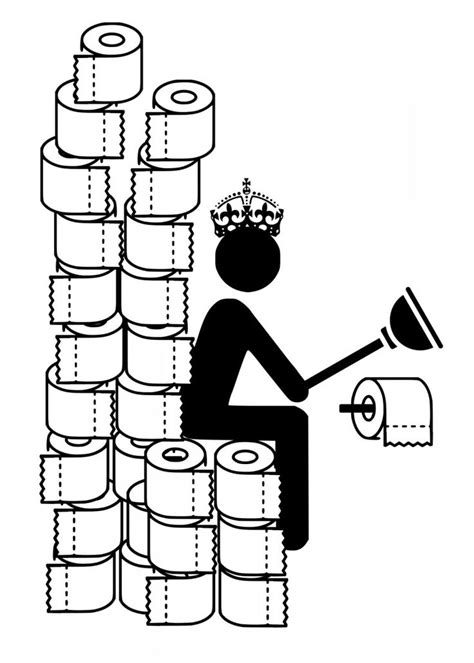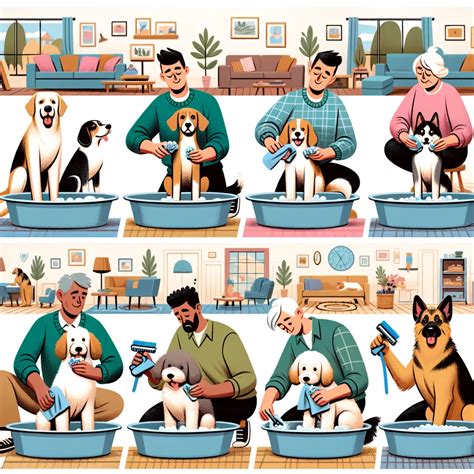
Toilet paper, a bathroom staple for generations, may soon face obsolescence as innovative hygiene technologies, particularly advanced bidet systems, gain traction and reshape personal hygiene practices.
The reign of toilet paper could be coming to an end as the demand for more hygienic and environmentally friendly alternatives rises. Bidet attachments and smart toilets are becoming increasingly popular in the United States, mirroring trends already established in countries like Japan and Italy, signaling a significant shift in how people approach personal cleanliness.
The trend is driven by several factors, including a heightened awareness of hygiene, environmental concerns related to deforestation and paper production, and technological advancements that have made bidets more accessible and user-friendly. “I predict that in 5 to 10 years, bidets will be in most households,” says Bruce Gillingham, general manager at Coway Europe B.V. This projection underscores the growing acceptance and integration of bidets into mainstream American households.
While toilet paper shortages during the COVID-19 pandemic initially sparked interest in alternatives, the benefits of bidets extend beyond mere availability. Proponents argue that bidets offer superior cleanliness, reduce the risk of irritation and infections, and contribute to a more sustainable lifestyle by minimizing paper consumption.
The Rise of the Bidet
Bidets, once considered a niche product, are now available in various forms, ranging from simple attachments that can be easily installed on existing toilets to sophisticated smart toilets with features like heated seats, warm air dryers, and automatic flushing. This increased accessibility and variety have made bidets an attractive option for a broader range of consumers.
The market is also being driven by companies like Tushy, Bio Bidet, and Kohler, which have invested heavily in product development and marketing to appeal to a wider audience. These companies emphasize the ease of installation, affordability, and health benefits of bidets, contributing to their growing popularity.
One of the primary arguments in favor of bidets is their superior hygiene. Unlike toilet paper, which can leave residue and potentially spread bacteria, bidets use water to thoroughly cleanse the area, leaving users feeling cleaner and fresher. This can be particularly beneficial for individuals with sensitive skin, hemorrhoids, or other medical conditions.
Environmental Benefits
In addition to improved hygiene, bidets offer significant environmental advantages. The production of toilet paper requires vast amounts of water, trees, and energy. According to some estimates, the toilet paper industry consumes millions of trees each year and contributes to deforestation and habitat loss.
By reducing or eliminating the need for toilet paper, bidets can help conserve these resources and reduce carbon emissions. While bidets do use water, the amount is typically much less than what is required to produce toilet paper. Some studies suggest that switching to bidets could save billions of gallons of water annually.
Furthermore, the elimination of toilet paper waste reduces the burden on landfills and wastewater treatment plants. Toilet paper is a significant component of household waste, and its disposal contributes to environmental pollution.
Cultural and Regional Differences
While bidets are gaining popularity in the United States, they have long been a standard fixture in many other countries. In Japan, for example, high-tech toilets with bidet functions are ubiquitous in homes, hotels, and public restrooms. Similarly, bidets are common in many European countries, particularly in Southern Europe and Scandinavia.
The adoption of bidets in the United States has been slower, due in part to cultural attitudes and perceptions. Some Americans view bidets as unfamiliar or unnecessary, while others are hesitant to invest in a new bathroom fixture. However, as awareness of the benefits of bidets grows and as more people experience their advantages firsthand, these attitudes are gradually changing.
Overcoming Obstacles
Despite the growing popularity of bidets, there are still some obstacles to their widespread adoption. One challenge is the cost. While basic bidet attachments are relatively affordable, smart toilets with advanced features can be quite expensive. This can be a barrier for some consumers, particularly those on a limited budget.
Another challenge is the installation process. While some bidet attachments are easy to install, others may require plumbing modifications or electrical work. This can be a deterrent for homeowners who are not comfortable with DIY projects or who do not want to incur the cost of hiring a plumber.
Finally, there is the issue of education and awareness. Many Americans are simply not familiar with bidets or their benefits. This lack of awareness can lead to misconceptions and resistance to change. However, as more information becomes available and as more people share their positive experiences with bidets, this obstacle is gradually being overcome.
The Future of Hygiene
The rise of the bidet is just one example of how technology is transforming personal hygiene practices. Other innovations, such as smart showers, self-cleaning toilets, and antimicrobial surfaces, are also gaining traction and promise to further improve cleanliness and convenience.
As technology continues to advance and as people become more aware of the importance of hygiene, it is likely that traditional methods of personal care will continue to evolve. The future of hygiene may involve a combination of traditional practices and cutting-edge technologies, all aimed at promoting health, comfort, and sustainability.
The shift towards bidets and other advanced hygiene technologies represents a broader trend towards greater awareness of personal health and environmental responsibility. As consumers become more informed and discerning, they are increasingly seeking out products and practices that align with their values and priorities.
For the toilet paper industry, this shift presents both a challenge and an opportunity. While the demand for toilet paper may decline in the long term, there will likely continue to be a market for paper products, particularly for those who are not yet ready to fully embrace bidets. Companies that can adapt to the changing market by offering sustainable and innovative paper products may be able to maintain their relevance.
Expert Opinions and Market Analysis
Industry experts and market analysts predict a continued growth in the bidet market in the coming years. According to a report by Grand View Research, the global bidet market is expected to reach $2.7 billion by 2025, driven by increasing demand for hygienic and eco-friendly solutions.
“The bidet market is experiencing significant growth due to rising awareness about personal hygiene and sanitation, coupled with increasing environmental concerns,” the report states. “The growing adoption of smart home technologies is also contributing to the market’s expansion.”
Another factor driving the growth of the bidet market is the increasing prevalence of online shopping. Online retailers like Amazon and Wayfair have made it easier for consumers to research and purchase bidets from the comfort of their own homes. This has expanded the reach of bidet manufacturers and made their products more accessible to a wider audience.
Conclusion
The days of toilet paper as the sole hygiene solution may be numbered. With the rise of bidets and other advanced hygiene technologies, consumers are increasingly seeking out alternatives that offer superior cleanliness, environmental benefits, and convenience. While toilet paper is unlikely to disappear entirely, its dominance in the bathroom is being challenged, and the future of personal hygiene is likely to be more diverse and technologically advanced.
The integration of bidets into mainstream American households is not just a trend but a reflection of evolving societal values and priorities. As people become more conscious of their health, their impact on the environment, and the possibilities offered by technology, they are embracing new ways of doing things, even in the most private of spaces. The throne may not be completely toppled, but it is certainly being shared.
Frequently Asked Questions (FAQs)
- What is a bidet, and how does it work?
A bidet is a bathroom fixture designed to cleanse the anal and genital areas with water after using the toilet. It comes in various forms, including standalone units, attachments for existing toilets, and integrated smart toilets. Bidets use a stream of water to wash the user, providing a more thorough and hygienic cleaning experience than toilet paper alone. Many advanced models also offer features like adjustable water pressure, temperature control, and warm air drying.
- What are the main benefits of using a bidet compared to toilet paper?
The benefits of using a bidet are multifaceted:
* **Improved Hygiene:** Bidets offer a more thorough and hygienic cleaning experience, reducing the risk of bacterial spread and infections. They effectively remove fecal matter and residue, leaving users feeling cleaner and fresher.
* **Environmental Friendliness:** By reducing or eliminating the need for toilet paper, bidets help conserve trees, water, and energy resources. The production of toilet paper contributes to deforestation and carbon emissions, while bidets use significantly less water overall.
* **Cost Savings:** While the initial investment in a bidet may be higher, the long-term cost savings can be significant due to reduced toilet paper consumption.
* **Comfort and Relief:** Bidets can provide soothing relief for individuals with sensitive skin, hemorrhoids, or other medical conditions. The gentle stream of water can reduce irritation and promote healing.
* **Accessibility:** Bidets can be particularly helpful for individuals with mobility issues, providing a more convenient and independent cleaning solution.- Are bidets difficult to install, and what are the different types available?
The installation process varies depending on the type of bidet.
* **Bidet Attachments:** These are the most common and easiest to install. They attach to your existing toilet and connect to the water supply. Installation typically requires basic plumbing knowledge and can be done in under an hour.
* **Bidet Seats:** These replace your existing toilet seat and offer more advanced features like heated seats, warm air dryers, and adjustable water pressure. Installation is similar to bidet attachments but may require an electrical outlet nearby.
* **Standalone Bidets:** These are separate fixtures that require their own plumbing connections. Installation is more complex and typically requires professional plumbing assistance.
* **Smart Toilets:** These are fully integrated toilets with built-in bidet functions and advanced features like automatic flushing, self-cleaning nozzles, and personalized settings. Installation requires both plumbing and electrical connections and is best handled by professionals.- How much water and energy do bidets use, and are they really more environmentally friendly?
Bidets use a relatively small amount of water per use, typically ranging from 1/8th to 1/2 gallon per wash. While they do require water, the overall environmental impact is less than that of toilet paper production. The toilet paper industry consumes vast amounts of water, trees, and energy. Studies have shown that switching to bidets can save significant amounts of water, reduce deforestation, and lower carbon emissions. The energy consumption of bidets varies depending on the model and features. Models with heated seats and warm air dryers will use more electricity than basic attachments. However, the overall energy consumption is still relatively low compared to the environmental costs associated with toilet paper production.
- Where are bidets most commonly used, and why has their adoption been slower in the United States?
Bidets are widely used in many countries around the world, including Japan, Italy, Spain, Portugal, France, and parts of South America. In Japan, high-tech toilets with bidet functions are ubiquitous in homes, hotels, and public restrooms.
The adoption of bidets has been slower in the United States due to several factors:
* **Cultural Attitudes:** Some Americans view bidets as unfamiliar or unnecessary. There is often a lack of awareness about their benefits and a reluctance to change established habits.
* **Cost:** The initial cost of purchasing and installing a bidet can be a barrier for some consumers, particularly those on a limited budget.
* **Plumbing and Electrical Requirements:** Some bidet models require plumbing modifications or electrical work, which can deter homeowners who are not comfortable with DIY projects or who do not want to incur the cost of hiring a professional.
* **Space Constraints:** In older homes with smaller bathrooms, there may be limited space for installing a separate bidet fixture.However, as awareness of the benefits of bidets grows and as more affordable and easy-to-install options become available, their adoption in the United States is increasing. The COVID-19 pandemic also contributed to a surge in bidet sales as consumers sought alternatives to toilet paper during shortages.
Detailed Breakdown of Environmental Impact
The environmental impact of toilet paper production is substantial and often underestimated. The process involves several stages, each contributing to resource depletion and pollution:
- Deforestation: The toilet paper industry is a major consumer of trees, contributing to deforestation and habitat loss. Millions of trees are cut down each year to produce virgin pulp, which is the primary raw material for toilet paper.
- Water Consumption: The production of toilet paper requires vast amounts of water. Water is used in the pulping process to separate fibers from wood, as well as in the bleaching and cleaning stages.
- Energy Consumption: The manufacturing process is energy-intensive, requiring significant amounts of electricity and fossil fuels. Energy is used to power machinery, heat water, and transport raw materials and finished products.
- Chemical Pollution: The bleaching process, which is used to whiten toilet paper, often involves the use of chlorine-based chemicals. These chemicals can pollute waterways and harm aquatic life.
- Transportation: The transportation of raw materials and finished products contributes to air pollution and greenhouse gas emissions.
By contrast, bidets offer a more sustainable alternative. While they do use water, the amount is typically much less than what is required to produce toilet paper. Furthermore, bidets eliminate the need for trees and reduce the use of chemicals and energy in the manufacturing process.
Economic Considerations
The economic benefits of switching to bidets are also significant. While the initial investment may be higher, the long-term cost savings can be substantial due to reduced toilet paper consumption.
A typical household spends hundreds of dollars per year on toilet paper. By switching to bidets, families can significantly reduce or eliminate this expense. Over the lifespan of a bidet, the cost savings can easily offset the initial investment.
Furthermore, bidets can reduce the cost of plumbing repairs. Toilet paper can clog pipes and septic systems, leading to costly repairs. By eliminating toilet paper waste, bidets can help prevent these problems.
Health and Hygiene Benefits in Detail
Bidets offer a range of health and hygiene benefits that toilet paper simply cannot match. The thorough cleansing action of water helps to remove fecal matter and residue, reducing the risk of bacterial spread and infections.
Bidets can be particularly beneficial for individuals with certain medical conditions, such as:
- Hemorrhoids: The gentle stream of water can provide soothing relief for individuals with hemorrhoids, reducing irritation and promoting healing.
- Anal Fissures: Bidets can help to keep anal fissures clean and prevent infection.
- Irritable Bowel Syndrome (IBS): Individuals with IBS often experience frequent bowel movements and discomfort. Bidets can provide a more comfortable and hygienic cleaning experience.
- Postpartum Care: Bidets are often recommended for postpartum care, as they provide a gentle and hygienic way to cleanse the perineal area after childbirth.
- Mobility Issues: Bidets can be particularly helpful for individuals with mobility issues, such as the elderly or those with disabilities. They provide a more convenient and independent cleaning solution.
The Future of Bidet Technology
Bidet technology is constantly evolving, with new and innovative features being introduced all the time. Some of the latest advancements include:
- Smart Toilets: These fully integrated toilets with built-in bidet functions offer a range of advanced features, such as automatic flushing, self-cleaning nozzles, and personalized settings.
- UV Sanitization: Some bidets are equipped with UV sanitization systems that kill bacteria and viruses on the nozzle and surrounding areas.
- Wireless Remote Controls: Wireless remote controls allow users to easily adjust the water pressure, temperature, and other settings.
- Mobile App Integration: Some bidets can be controlled via a mobile app, allowing users to customize their settings and track their usage.
- Voice Control: Voice control technology allows users to operate the bidet hands-free.
- AI-Powered Personalization: Artificial intelligence is being used to develop bidets that can learn users’ preferences and automatically adjust the settings for optimal comfort and hygiene.
These advancements are making bidets more user-friendly, convenient, and effective. As technology continues to evolve, it is likely that bidets will become even more sophisticated and integrated into our daily lives.
Adapting to the Change: Advice for Consumers
For consumers considering making the switch to bidets, here are some tips:
- Research different types: Explore the various bidet options available, from simple attachments to high-end smart toilets, to find one that fits your budget and needs.
- Consider installation requirements: Assess whether you can install the bidet yourself or if you’ll need professional help. Factor in the cost of installation when making your decision.
- Read reviews: Look for reviews from other users to get an idea of the bidet’s performance, durability, and ease of use.
- Start with a basic model: If you’re unsure about making the switch, start with a basic bidet attachment to see if you like the experience.
- Be patient: It may take some time to adjust to using a bidet. Experiment with different settings to find what works best for you.
- Educate yourself: Learn about the benefits of bidets and share your knowledge with others to help promote their adoption.
- Consider water temperature: Cold water can be a shock, especially in colder climates. Bidet seats offer the option to warm the water.
- Don’t be afraid to use both: Some people prefer to use a small amount of toilet paper to dry off after using the bidet.
Toilet Paper Industry Response
The toilet paper industry is aware of the growing popularity of bidets and is taking steps to adapt to the changing market. Some companies are investing in sustainable forestry practices and developing eco-friendly toilet paper products. Others are exploring partnerships with bidet manufacturers to offer bundled products and services.
The industry is also emphasizing the importance of toilet paper for drying and other hygiene purposes. While bidets can reduce the need for toilet paper, they may not eliminate it entirely.
Conclusion: A New Era of Personal Hygiene
The shift towards bidets and other advanced hygiene technologies marks a significant change in how we approach personal cleanliness. While toilet paper has been a bathroom staple for generations, its dominance is being challenged by more hygienic, environmentally friendly, and technologically advanced alternatives.
The future of personal hygiene is likely to involve a combination of traditional practices and cutting-edge technologies, all aimed at promoting health, comfort, and sustainability. As consumers become more informed and discerning, they are increasingly seeking out products and practices that align with their values and priorities. The throne may not be completely toppled, but it is certainly being shared, ushering in a new era of personal hygiene that prioritizes cleanliness, sustainability, and technological innovation. The bidet, once a niche product, is poised to become a mainstream fixture in American bathrooms, signaling a fundamental shift in how we care for ourselves and the planet.









